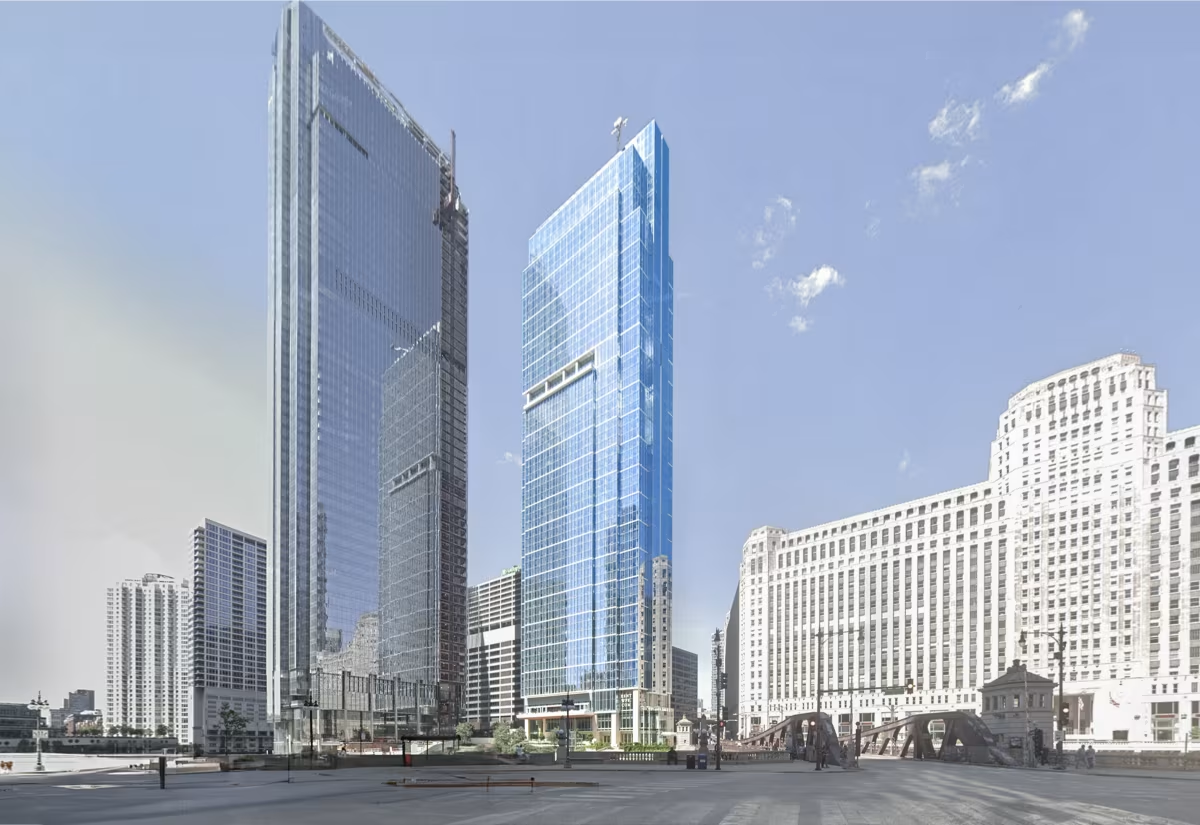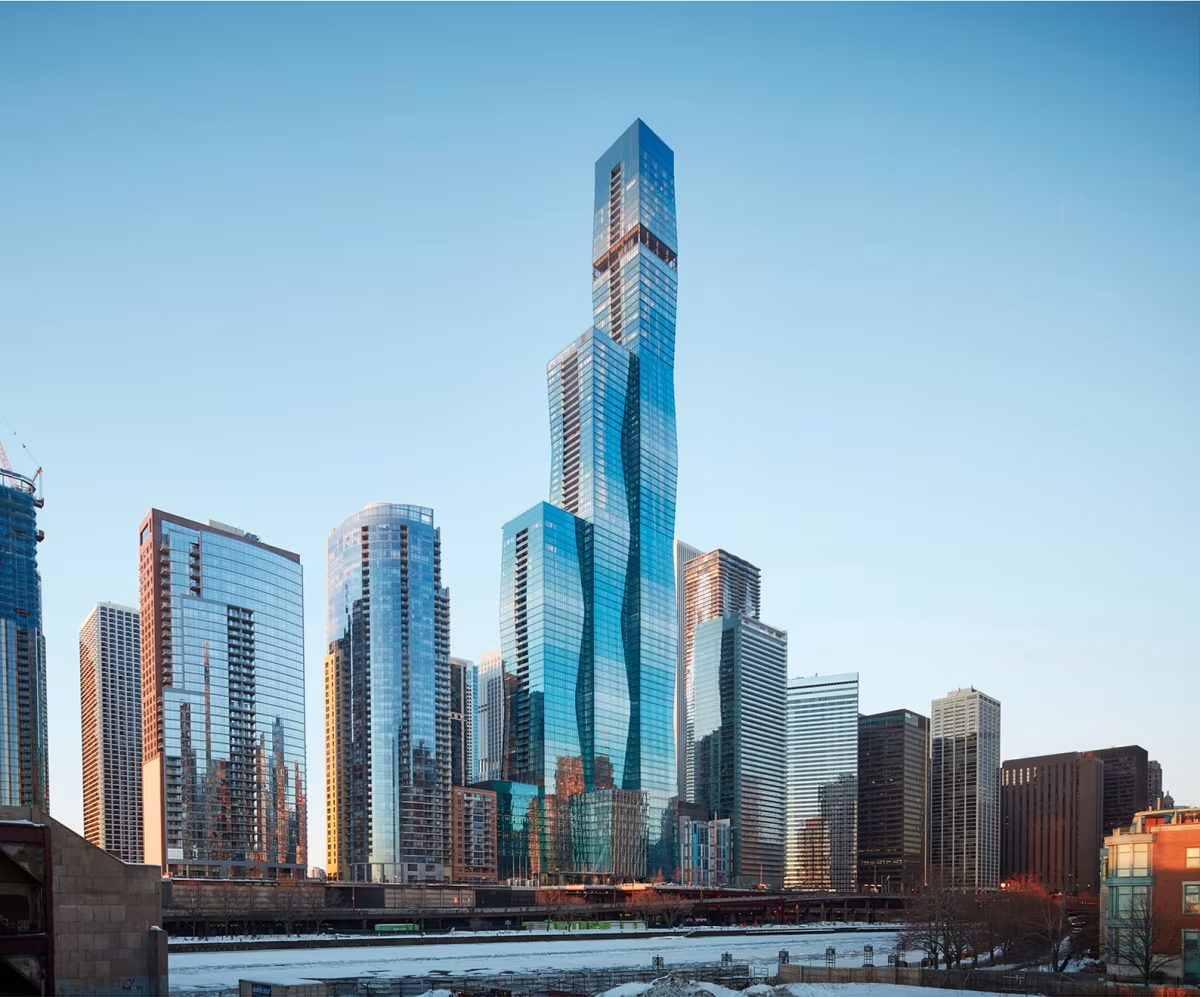Wolf Point East Tower vs St. Regis Chicago


Comparing the Wolf Point East Tower and the St. Regis Chicago is interesting because they both stand in Chicago, IL, and were completed just one year apart, but they were designed by different architects.
This offers a unique glimpse at how rival designers approached projects in the same city during the same era.
Height & Size
The St. Regis Chicago is clearly the larger tower of the two, both in terms of height and number of floors. It rises to 1194ft (364m) with 101 floors above ground, while the Wolf Point East Tower reaches 666ft (203m) with 60 floors above ground.
Of course, each project may have faced different briefs or regulatory constraints, which we don't really know about and could also explain the outcome.
Architectural Style
Both the Wolf Point East Tower and the St. Regis Chicago were designed in line with the aesthetic conventions of the Contemporary style.
At the time, this style was at the height of its popularity. So both Pelli Clarke Pelli Architects and Studio Gang Architects followed what was in many ways expected of them, producing designs that fit comfortably within contemporary architectural norms, rather than breaking with convention.
Uses
Both the Wolf Point East Tower and the St. Regis Chicago were designed to serve as residential towers, and that has remained their main use since their completion, serving similar roles in the urban fabric.
The St. Regis Chicago incorporates a 5-star hotel with 192 rooms. More information is available at the official website.
In terms of capacity, the Wolf Point East Tower offers 698 apartments, while the St. Regis Chicago provides 393 units.
Both towers provide significant parking capacity, with Wolf Point East Tower offering 198 spaces and the St. Regis Chicago offering 295.
Structure & Facade
Both the Wolf Point East Tower and the St. Regis Chicago rely on a Frame structural system.
A frame structure uses a grid of columns and beams to carry the building's loads. This frees the walls from structural duties, allowing for flexible floor plans and larger windows.
They also employ the same type of facade, a Curtain Wall facade.
A curtain wall is a non-load-bearing facade hung from the structural frame. It is anchored to floor slabs and transfers only its own weight and wind loads, allowing for sleek, glassy exteriors.
| Wolf Point East Tower | St. Regis Chicago | |
|---|---|---|
| Pelli Clarke Pelli Architects | Architect | Studio Gang Architects |
| 2012 | Design Ended | 2016 |
| 2017 | Construction Started | 2016 |
| 2020 | Year Completed | 2021 |
| Contemporary | Architectural Style | Contemporary |
| Residential | Current Use | Residential |
| 60 | Floors Above Ground | 101 |
| 203 m | Height (m) | 364 m |
| 87,330 m² | Usable Area (m²) | 131,400 m² |
| 698 | Residential Units | 393 |
| Frame | Structure Type | Frame |
| Concrete | Vertical Structure Material | Reinforced Concrete |
| Concrete | Horizontal Structure Material | Reinforced Concrete |
| No | Facade Structural? | No |
| Gass | Main Facade Material | Aluminum, Glass |
| Walsh Construction | Main Contractor | James McHugh Construction Co. |
| Hines | Developer | Magellan Development Group |
| Wolff Landscape Architecture, Inc. | Landscape Architect | OLIN |
| Cosentini Associates | MEP Engineer | DbHMS |
| Magnusson Klemencic Associates | Structural Engineer | Magnusson Klemencic Associates |
| Soucie Horner, Ltd. | Interior Designer | Gensler And HBA |
| IL | State | IL |
| Chicago | City | Chicago |
| 313 W. Wolf Point Plaza | Address | 363 East Wacker Drive |